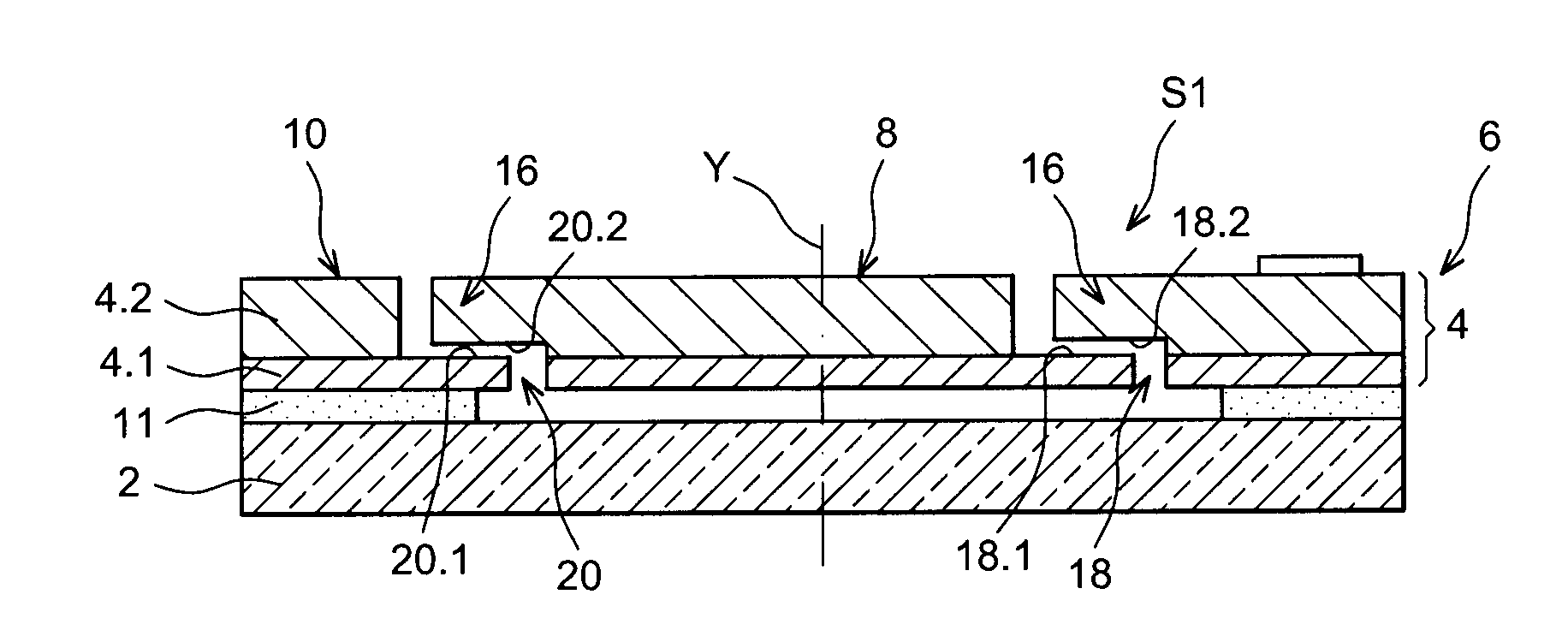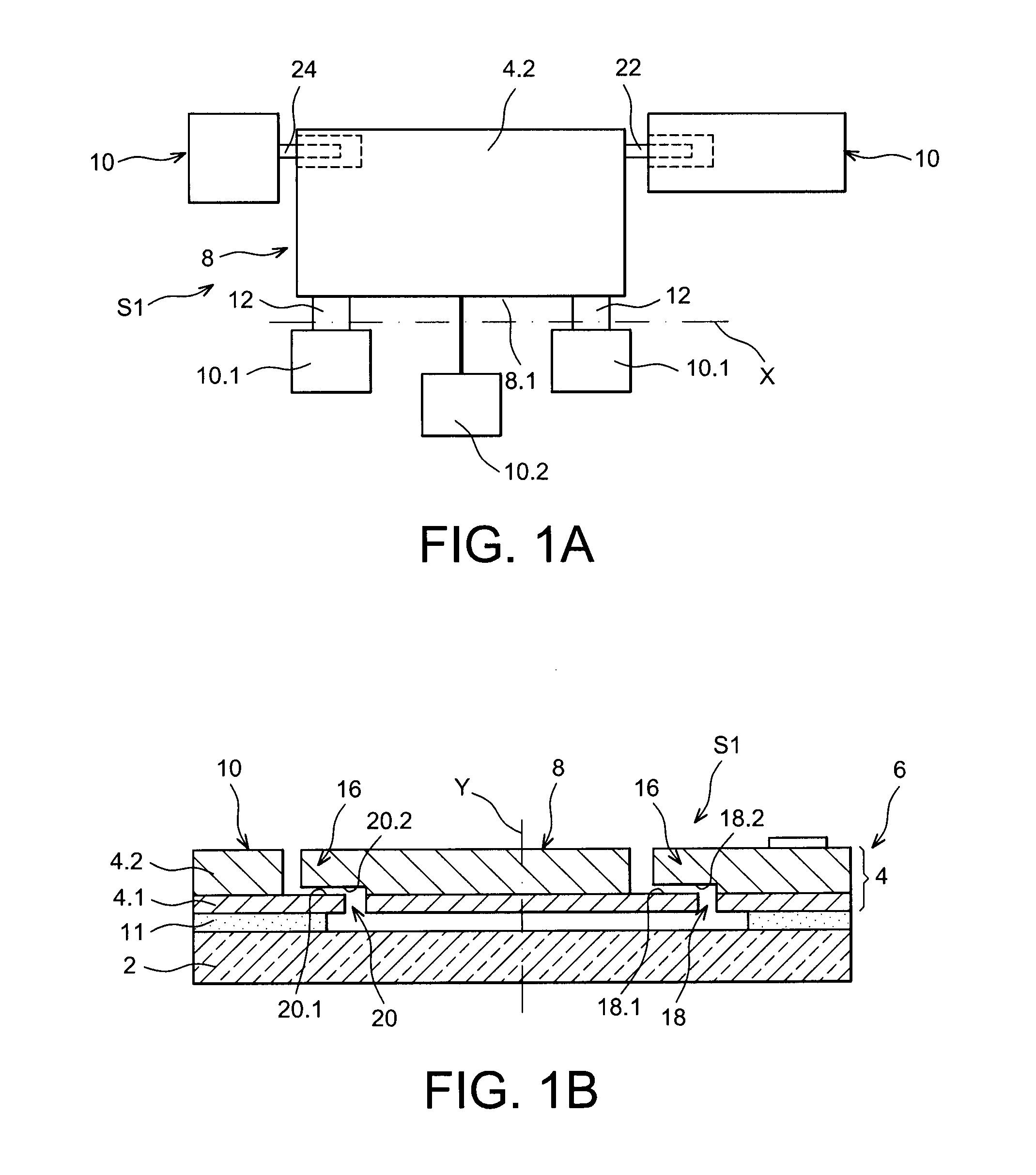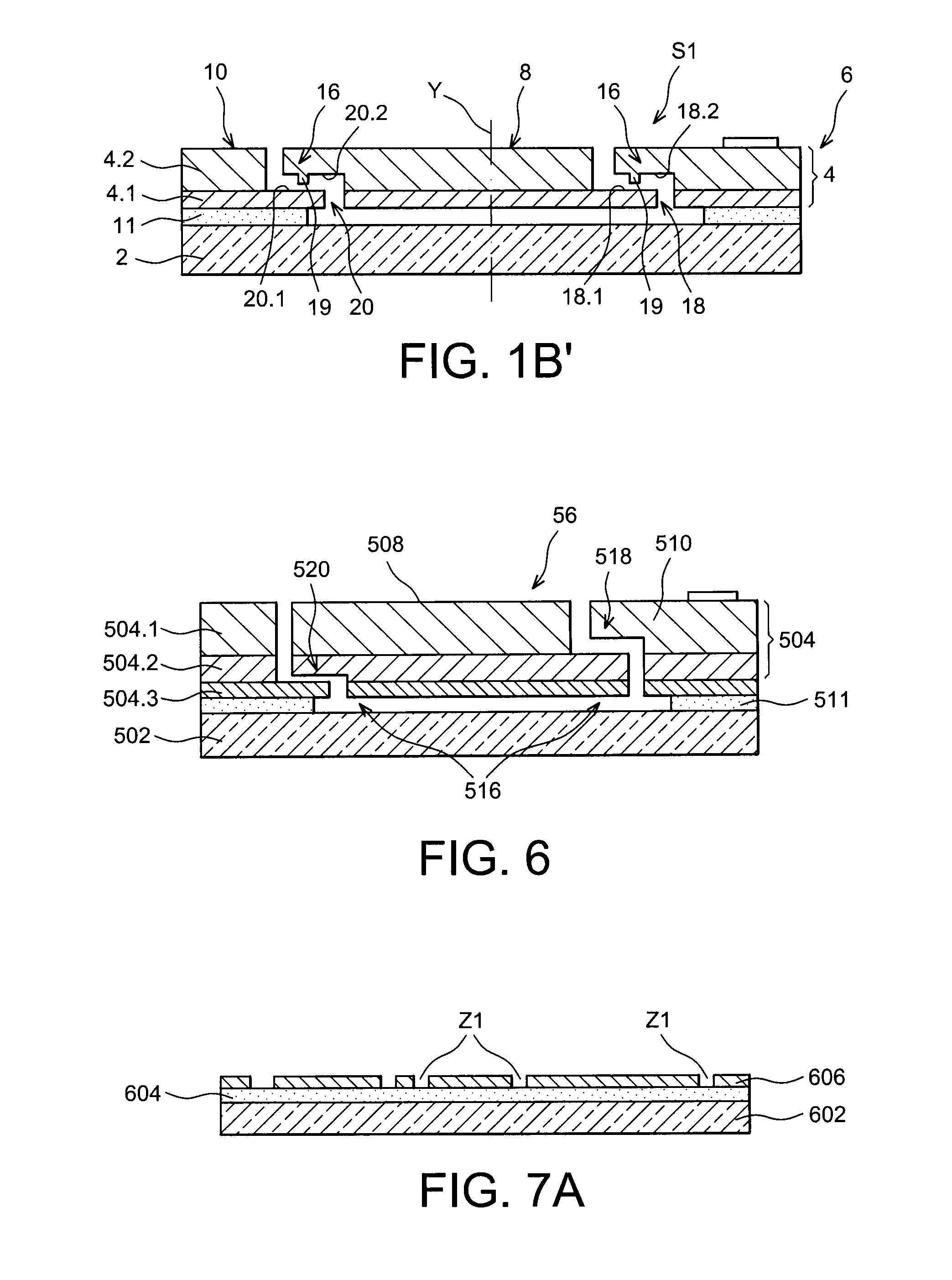Micromechanical structure comprising a mobile part having stops for out-of-plane displacements of the structure and its production process
a technology of micromechanical structure and mobile parts, applied in the direction of electrical transducers, loudspeakers, instruments, etc., can solve the problems of inability to control the symmetry between high and low stops, particularly harmful to the low limit, and the inability to optimize the performance of the mems and its bulk
- Summary
- Abstract
- Description
- Claims
- Application Information
AI Technical Summary
Benefits of technology
Problems solved by technology
Method used
Image
Examples
Embodiment Construction
Throughout the description, the micromechanical structures described are adapted to making an accelerometer, but it is well understood that the present invention applies to making any other type of sensor, for example making gyrometers and or any other system using such a micromechanical structure.
In the description, MEMS designates both micro-electro-mechanical systems and nano-electro-mechanical systems.
FIGS. 1A and 1B illustrate a first example of a micro-electro-mechanical structure for making an out-of-plane accelerometer with strain gauge.
A micromechanical structure is called out of plane when the direction of displacement of its mobile part is oriented substantially perpendicularly to its principal plane.
The micromechanical structure S1 of FIGS. 1A and 1B comprises a substrate 2, on which is arranged a stack 4 of at least two layers 4.1, 4.2, in the example shown.
The stack 4 forms the active structure of the micromechanical structure, the active structure 6 comprising a mobil...
PUM
 Login to View More
Login to View More Abstract
Description
Claims
Application Information
 Login to View More
Login to View More - R&D
- Intellectual Property
- Life Sciences
- Materials
- Tech Scout
- Unparalleled Data Quality
- Higher Quality Content
- 60% Fewer Hallucinations
Browse by: Latest US Patents, China's latest patents, Technical Efficacy Thesaurus, Application Domain, Technology Topic, Popular Technical Reports.
© 2025 PatSnap. All rights reserved.Legal|Privacy policy|Modern Slavery Act Transparency Statement|Sitemap|About US| Contact US: help@patsnap.com



